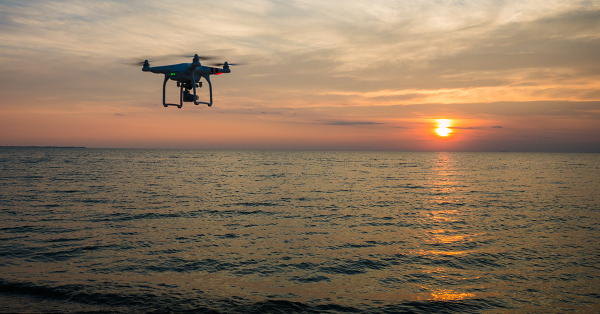Who would have thought back in 2000 when the CIA were using unarmed drones over Afghanistan how widespread their usage would become? From people using them for fun to business using them in areas like agriculture and construction to film from normally inaccessible areas. However, they are so versatile the delivery benefits they offer are now being explored, especially in the medical sector.

At the end of last year Amazon made its first drone delivery just 13 minutes after the order was made. It looked like drone delivery was here and in a fast paced world where we want instant gratification, drones were going to help make that a reality. But drone delivery is not just for shopping, it’s also starting to play a key role in the medical world. UNICEF are trialing them for vaccine delivery to remote areas on the island nation of Vanuatu which if successful will be rolled out to other islands. UNICEF said:
"Ensuring vaccines are consistently available in
isolated and remote communities is one of the
keys to sustaining high rates of immunisation."
In Rwanda, Zipline deliver blood by drone and have been so successful they’re now talking to other governments in Africa. With poor roads and hilly terrain, drones provide the quick delivery that vehicles can’t match. But it doesn’t just need to be in poor terrain. Drones can fly direct and aren’t delayed by traffic lights etc. Flypulse say their defibrillator drones can reach people up to 4 times faster than an ambulance, drastically increasing chance of survival. These flying objects that started life on futuristic TV shows are now saving lives.
But they’re not just helping save human lives. With funding from the World Wildlife Fund and a grant from Google, drones are being tested for their potential in the fight against poachers in Africa. With the ability to film in both daylight and the dark, the drones send live video footage back to a control center where an operator turns on the navigation lights and sends the drone towards the poachers, scaring them enough to run away. The challenge is how drones can work with existing anti-poaching operations and get buy-in from all relevant parties. There’s a way to go but with a poaching crisis in Africa, the WWF hopes to find out how this technology can help save wildlife.
Vaccines and medical equipment cost a lot of money. Using drones to deliver can save money over traditional land transport methods and also free up valuable employee time to do other things. However, more importantly, drones can travel quickly and save lives.
So next time you see a drone, don’t panic. It could be on its way to help save a life.
